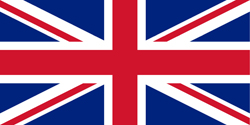Interesting facts - woven fabric
WHAT IS WOVEN FABRIC?
Woven fabrics are, as the name suggests, woven fabrics. There are at least two threads that are woven together to form a fabric. In weaving, the two thread systems (called “warp” and “weft”), which are at right angles to each other, are woven in a specific order on a loom. The warp threads serve as a support and are pre-tensioned, while the weft threads are pulled from one side to the other through the width of the fabric.
During the weaving process, a slightly thicker, approx. 1 cm wide edge is usually created on the long edges, which is called the selvedge. This shows the lengthwise direction of the fabric. If a pattern refers to the grain, this selvedge is helpful as it shows the direction of the grain. Lay the pattern parallel to the selvedge on your fabric. Depending on the type of fabric, you can also use them running crosswise, but they are usually worked lengthwise.
Woven fabrics are available in different “weaves”. A kind of specification/sequence in which pattern the threads are woven together. For example, when we talk about plain weave, satin weave or twill weave, we are referring to this pattern. The basic structure of the fabric is defined here.
POPLIN
Lightweight, non-stretch fabric
Properties:
Fine poplin fabrics can be used for classic blouses and shirts.
Fine and firmer poplin fabrics are multifunctional and perfect for decoration, patchwork, quilting and beginner projects.
Cushion covers, bed linen, curtains, tablecloths, napkins and many other decorative projects around the home and furnishings can be realized very well with poplin. This fabric is also well suited for lightweight fabric bags and purse projects.
Sewing tip:
Easy and versatile to work with, therefore suitable for beginners or less experienced sewers. Universal sewing machine needles in size 80 are ideal for this type of fabric.
CANVAS
medium-weight, robust, non-stretch fabric - often made of cotton
Properties:
Canvas fabrics are strong, robust fabrics with a plain weave. They are durable and abrasion-resistant and are ideal for backpacks, bags, jackets, pants and even shoes. Canvas is also a popular fabric for interior design: furniture and cushion covers are often made from canvas.
Canvas is available in different weights and thicknesses. As a basic rule of thumb, the heavier it is, the stronger, stiffer and more robust it is. Depending on the sewing project, it is therefore advisable to pay attention to the weight.
Sewing tip:
Sewing machine needles tend to be slightly thicker, depending on the weight/weight density, approx. size 90 or 100.
Decorative quilting seams work particularly well with thick thread, e.g: DENIM DOC and a long stitch length.
Care recommendation:
Do not use a tumble dryer for drying.
Gabardine
mostly non-stretch fabric, also elastic if elastane is added
Use/properties:
Gabardine is a twill weave fabric - distinguishing feature: typical, diagonal weave structure - similar to jeans fabrics. It creases rather little and retains its shape even after repeated wear. Depending on the weight, it is suitable for jackets, pants or furniture and cushion covers.
Gabardine is available in different weights and thicknesses. Depending on the sewing project, it is therefore advisable to pay attention to the weight.
Sewing tip:
Sewing machine needles tend to be slightly thicker, depending on the weight/density of the fabric, approx. size 90 or 100.
Decorative quilting seams work particularly well with thick thread, e.g: DENIM DOC and a long stitch length.
Care recommendation:
Do not use a tumble dryer for drying.
Double Gauze
light, airy double-layer fabric
Use/properties:
Two layers of fabric are joined together at points to create a crinkled, fluffy look. This is reinforced after washing. Double gauze fabrics can usually be used on both sides.
Double gauze is wonderfully airy and soft. Very suitable for loose, airy summer fashion such as blouses, skirts, pants, dresses or even scarves, summer blankets and even curtains.
Sewing tip:
Whether or not double gauze should be ironed during processing is a matter of debate in the sewing world. Both are possible.
If ironing is used, it should be borne in mind that the crepe look is pressed apart or flattened when ironed - but after washing, the fabric pulls back together again! This can cause a significant difference, especially in the fabric width, and should therefore be taken into account when cutting.
If possible, it can be helpful to reduce the foot pressure slightly.
Needle size rather fine - size 70 to 80 is sufficient.



-crayon-.jpg)



